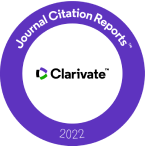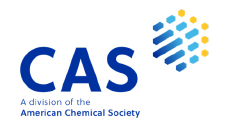Journal Volumes
Visitors
ALL : 904,059
TODAY : 1,500
ONLINE : 81
ALL : 904,059
TODAY : 1,500
ONLINE : 81
JOURNAL DETAIL
Detection of Bacterial Communities in Volatile-organic-compound (VOC)-contaminated Soil in an Industrial Estate in Eastern Thailand by PCR-DGGE Analysis
Paper Type |
Contributed Paper |
Title |
Detection of Bacterial Communities in Volatile-organic-compound (VOC)-contaminated Soil in an Industrial Estate in Eastern Thailand by PCR-DGGE Analysis |
Author |
Manatsawat Sriwichai, Fairda Malem, Mujalin K. Pholchan and Sakunnee Bovonsombut* |
Email |
sakunnee.b@cmu.ac.th |
|
Abstract: The prolonged contamination and accumulation of volatile organic compounds (VOCs) in soil and groundwater around industrial estate areas can have a negative impact on human health and the environment. In situ bioremediation by microbial activities is one of the most effective ways to remove soil pollutants. In order to promote the bioremediation process by nutrient application, it is important to understand the microbial community in the affected area. In this study, the diversity of bacterial communities in VOC-contaminated soil collected from eight sites within an industrial estate in the Eastern part of Thailand was determined by polymerase chain reaction-denaturing gradient gel electrophoresis (PCR-DGGE) analysis. The bacterial diversities in soil samples were evaluated in three enrichment media: tryptic soy broth, nutrient broth, and half-strength nutrient broth. Primers targeting 16S rRNA gene fragments were used. A total bacteria count was also performed in order to determine whether the number of bacteria were sufficient for bioremediation. We found that enrichment of soil with tryptic soy broth resulted in the greatest bacterial diversity. The bacterial communities in VOC-contaminated soil consisted mainly of Gram-negative Proteobacteria including Gamma- and Beta-proteobacteria, with genus Pseudomonas being prominent, and a Gram-positive member of phylum Firmicutes which was identified as Bacillus. The bacterial counts in most samples were higher than 3 logCFU×g-1, which were high enough for in situ bioremediation. The results from this study could be used when considering nutrient application to increase the efficiency of bioremediation. |
|
Start & End Page |
742 - 750 |
Received Date |
2016-03-25 |
Revised Date |
|
Accepted Date |
2016-09-16 |
Full Text |
Download |
Keyword |
VOC contaminated soil, industrial estate, PCR-DGGE, bacterial community |
Volume |
Vol.44 No.3 (July 2017) |
DOI |
|
SDGs |
|
| View:558 Download:177 | |
Copyrights © Since 2021 All Rights Reserved by Chiang Mai Journal of Science






